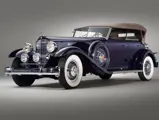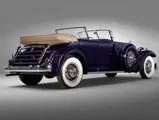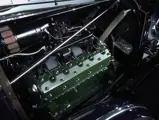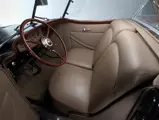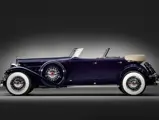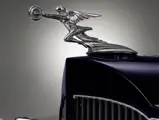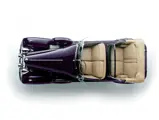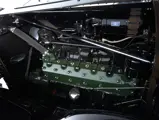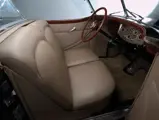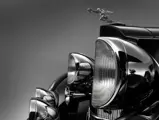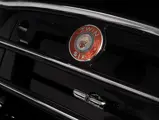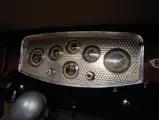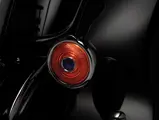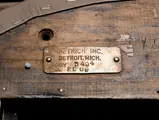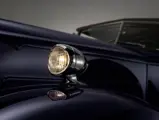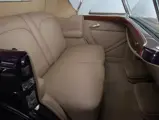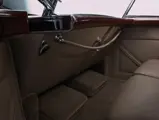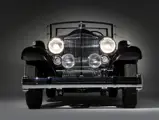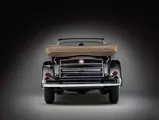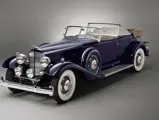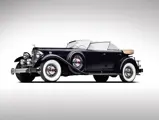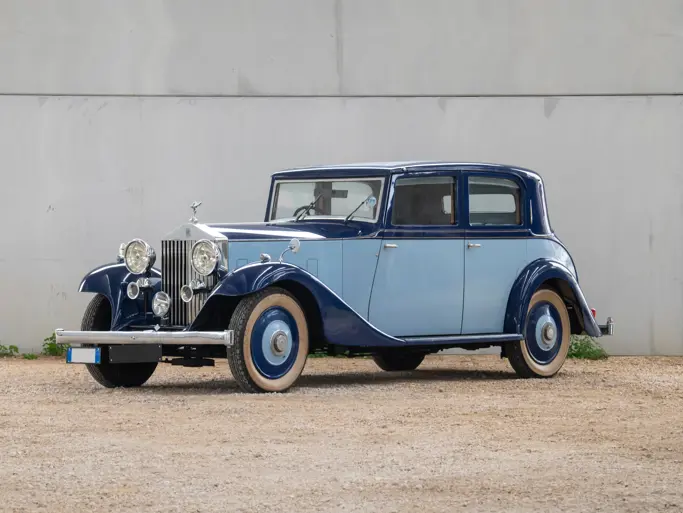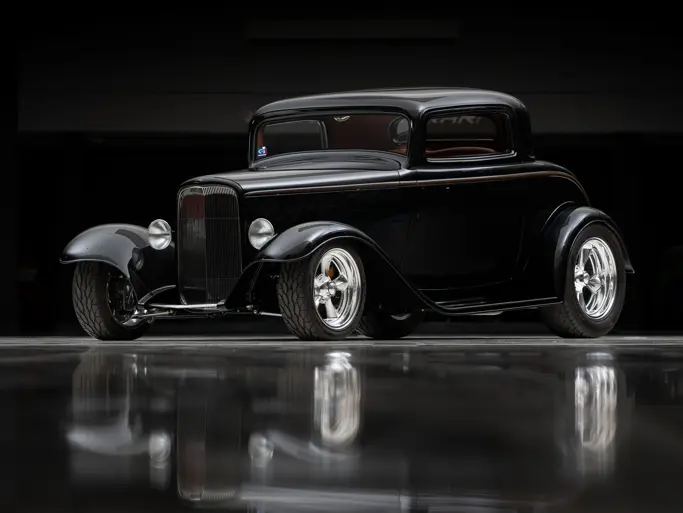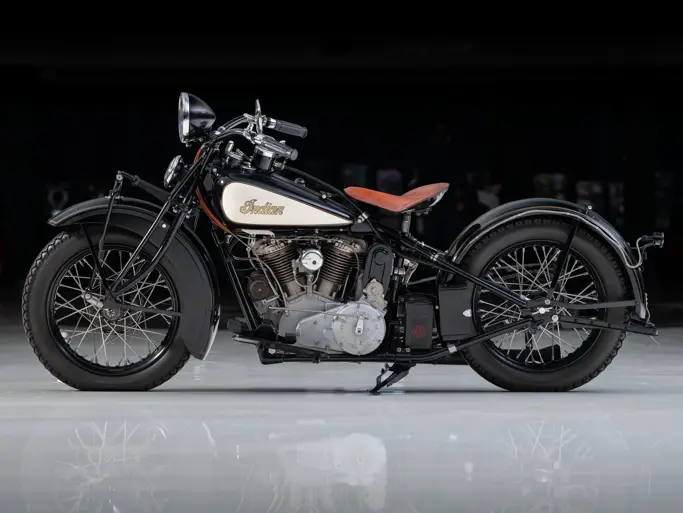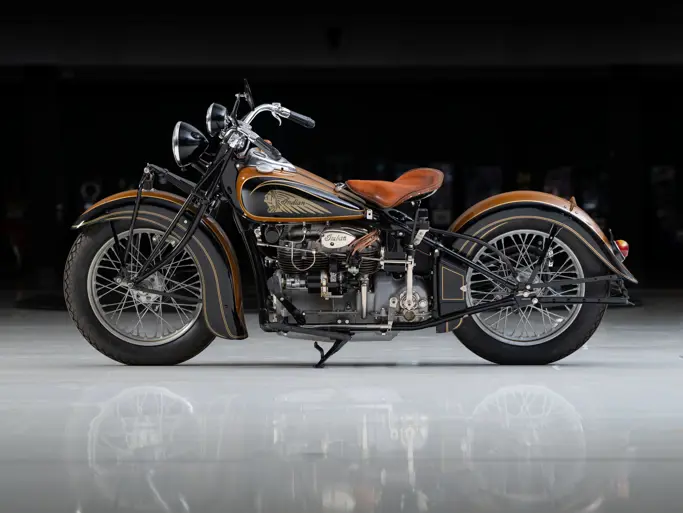Monterey 2012
1932 Packard Individual Custom Twin Six Sport Phaeton by Dietrich Inc.
{{lr.item.text}}
$946,000 USD | Sold
 | Monterey, California
| Monterey, California
{{internetCurrentBid}}
{{internetTimeLeft}}

Model 906. 160 bhp, 445 cu in side valve V-12 engine with Stromberg downdraft carburetion featuring automatic cold start, three-speed synchromesh transmission, solid axle and semi-elliptic leaf spring front suspension with shaft drive and a hypoid live rear axle with semi-elliptic leaf spring rear suspension, and four-wheel adjustable vacuum assisted brakes. Wheelbase: 147.5"
• Ex-Jim Hull, Dick Dewey, Robert Bahre, and Lee Herrington
• Winner of the Most Elegant Open Car at Pebble Beach in 1997
• Offered from the Estate of John O’Quinn
The Custom-Bodied Twin Six
Despite Packard’s success in providing high-quality chassis for custom coachbuilders, Company President Alvan Macauley advocated bringing custom coachbuilding in-house, and 1931 was the year his plan was implemented. Dietrich Inc. still built a few custom bodies for the senior Packards, and these special cars, known today as the “V-windshield custom Dietrichs,” have come to epitomize the ultimate in classic styling. It has been said that design excellence is as much about the details as it is about the vision, and that is certainly true of these remarkable Style 2069 Sport Phaetons.
The Dietrich Individual Customs were mounted on Packard’s longer 147½ inch chassis, which allowed a better balance of body proportions, with a roomy passenger compartment situated behind a long, graceful hood and ahead of a unique and striking tapered tail with a smartly integrated trunk. Every line is exquisite, starting with the graceful v-windshield, continuing with the Dietrich trademark beltline, and finishing with a superbly crafted top that makes the car look as good with the top up as it does down.
One of the most fascinating features of the Sport Phaeton body is the mechanism that activates the rear windshield. After raising the windshield from its hidden compartment, a pair of side wings swing out and hook to mechanisms recessed into the rear doors. Once raised, passengers can enter or leave the rear compartment easily and gracefully, while the side windows swing effortlessly out of the way.
Of the two years that these bodies were produced, most collectors prefer the lines of the ’32 Twin Six Sport Phaetons to those of the 1933 models, primarily because of the more graceful, classic-sweeping fender line. It is also true that the larger 18-inch wheels, particularly in chrome, give the car a presence and regal stance that distinguishes the Twin Six from the later Twelve chassis.
The lack of surviving records makes it difficult to be certain how many of these lovely sport phaeton bodies were built, but many historians feel that it was not likely more than twelve cars. Today, only seven remain, of which, just five were built on the prestigious twelve cylinder chassis. Of these five, only two, including this is example, were crafted in 1932. In addition, two examples on the Deluxe Eight chassis survive, and three examples on the 1933 Twelve chassis remain, all of which are part of long-term or museum collections.
The Twin Six: Out of Africa
Early Packard records did not survive to present day, but it is known that body 5494 was updated in 1938 by fitting the graceful original Twin Six sport phaeton body on a brand new 1938 Packard Twelve chassis. In order to do this, the upper cowl and windshield assembly were fitted to the new 1938 cowl. At the same time, a more modern “torpedo” style, rear-body section was grafted on, and a set of up-to-date, pontoon-style Packard fenders were fitted.
There is no proof as to the identity of the shop that carried out the work, but later inspections during restoration revealed exceptional workmanship. A persistent rumor credits the work to Inskip in New York and a tantalizing photograph may provide proof. Printed on page 153 of John Webb deCampi’s book Rolls Royce in America, the photo shows a new 1938 Packard Twelve chassis on the floor of the Inskip workshop, clearly in the process of having a different body fitted to it.
In any event, the owner, possibly the original one, is believed to have been in the service of the U.S. Diplomatic Corps, and he accepted a posting to South Africa in the late-1930s. Accordingly, the Packard was shipped there, where it was to remain until 1967 or 1968, when its whereabouts came to the attention of long-time classic car enthusiast Jim Hull during a trip to Johannesburg. Hull brought the car back to the U.S. and enjoyed his unique Packard Custom Dietrich for many years.
Meanwhile, the only other surviving 1932 Twin Six Dietrich Sport Phaeton, body number 5493, was in the hands of Dick Dewey, a well-known Packard enthusiast at the time. Noted collector Bob Bahre, of Oxford, Maine, had tried unsuccessfully for many years to buy the car from Dewey, believing it to be the only survivor. Thus, when Bahre learned of the existence of the Hull car, he quickly negotiated its purchase. As it happened, Bob owned a very low mileage 1932 Packard Twin Six chassis carrying rather antiquated 1920s Fleetwood coachwork that had been installed by its original owner in the period—further evidence of the propensity of Classic Era owners to change favored bodies, just as the owner of the example offered here would do in 1938.
Bob saw the chance to fulfill his dream of finally owning a ’32 Twin Six Dietrich Sport Phaeton and arranged for Beaver, a well-respected restorer at the time, to return the Twin Six Sport Phaeton to its original form by installing it on his exceptional 1932 Twin Six chassis. In the process, Beaver carefully reversed the “updates” that had been carried out in the late-1930s.
Significantly, 5494’s original Dietrich body tags have remained on the car, and the production sequence confirms that this is the last of the two sequentially numbered survivors. Twin Six production began about mid-year, and the two surviving Deluxe Eight cars have low body numbers, while the two Twin Sixes have higher numbers. This, of course, is consistent with events at the factory, where eight-cylinder Custom Dietrich production ceased with the introduction of the Twin Six.
After Beaver had completed the wood and sheet metal work, but before the restoration could be finished, Dick Dewey approached Bob Bahre, finally willing to sell his body 5493, on the condition that Bob trade him 5494, which was under restoration at Beaver, plus a cash difference. Bob didn’t want to sell the “Out of Africa” car but agreed to the deal on the condition that if Dick ever sold it, he would have right of first refusal.
A deal was struck and Dick took delivery of the unfinished Sport Phaeton. He completed the remaining work, mainly paint and final assembly, and began to drive the car extensively on tours and events. During this time, it became one of the best known Dietrich Sport Phaetons, as Dick drove it everywhere, putting tens of thousands of nearly trouble free miles on the car.
Five or six years later, in the early-1990s, the Sport Phaeton was starting to show its age, and once again, Dick went to see his friend Bob Bahre. Bob exercised his right of first refusal and traded Dick a lovely 1932 Super Eight production phaeton plus a cash difference to reacquire his beloved Twin Six Sport Phaeton, body number 5494, the last one built. Having acquired the only other Twin Six Sport Phaeton, he began to make plans to freshen his new acquisition, but before he could start work, Mr. Lee Herrington was able to negotiate the purchase of 5494.
Shortly after taking possession of the car, he decided that a car of this caliber and importance should be restored to the highest levels, and accordingly, he delivered the car to RM Auto Restoration, where a no-holds-barred restoration was undertaken. Even though the car was running well, considering the amount of driving Dewey had done, he insisted that a complete mechanical restoration be performed. As a result, every system, from brakes to suspension, steering, electrical, and driveline components, was meticulously disassembled and renewed to factory specifications.
The objective was nothing less than a Pebble Beach win, and consequently, dozens of colors and leather samples were evaluated before the car’s elegant dark violet, a shade that looks navy blue in all but the brightest light, was chosen. The leather was custom dyed to a taupe color that proved a striking complement to the paint. With all the other details attended to, the moment of truth arrived at the Pebble Beach Concours d’ Elegance, and it was there, in its debut showing, that the car was awarded the Gwen Graham Award for Most Elegant Open Car—a prize widely considered to be second only to Best of Show.
Subsequently, the Packard has earned its CCCA National First Place Senior Award, as well as both Junior and Senior AACA awards. It has never failed to earn accolades every time shown and stands today as a testimonial to both the restorer’s art and the vendor’s relentless drive to achieve the ultimate in classic elegance. It was subsequently acquired by Mr. John O’Quinn, from whose estate it is offered.
Any Dietrich Packard is something to be treasured, and the vee windshield Custom Dietrich designs stood at the pinnacle of the Packard world then, just as they do today. This icon will reward its owner in many ways, from the thrill of recognition that comes with victories on the concours podium to the sublime experience of ghosting along, silently and effortlessly, through the crisp autumn air. Inevitably, as in any pursuit, there is always a “best,” and for many Packard collectors, the best Dietrich of all is the elegant and graceful 1932 Twin Six Sport Phaeton. These Dietrich-bodied Packards emerge infrequently, and consequently, any interested parties are advised that it is likely to be many more years before another such opportunity arises.

